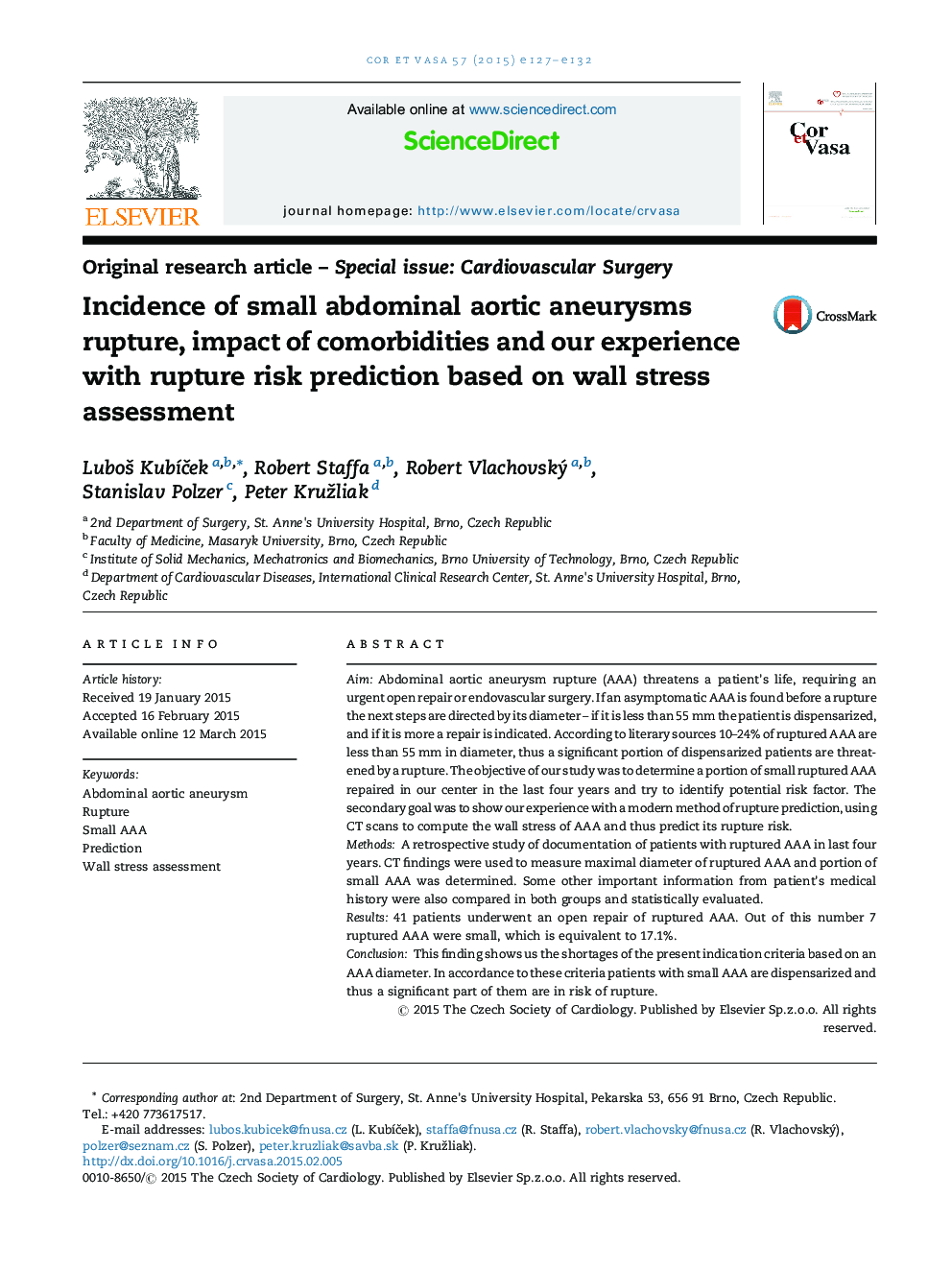| Article ID | Journal | Published Year | Pages | File Type |
|---|---|---|---|---|
| 2728399 | Cor et Vasa | 2015 | 6 Pages |
AimAbdominal aortic aneurysm rupture (AAA) threatens a patient's life, requiring an urgent open repair or endovascular surgery. If an asymptomatic AAA is found before a rupture the next steps are directed by its diameter – if it is less than 55 mm the patient is dispensarized, and if it is more a repair is indicated. According to literary sources 10–24% of ruptured AAA are less than 55 mm in diameter, thus a significant portion of dispensarized patients are threatened by a rupture. The objective of our study was to determine a portion of small ruptured AAA repaired in our center in the last four years and try to identify potential risk factor. The secondary goal was to show our experience with a modern method of rupture prediction, using CT scans to compute the wall stress of AAA and thus predict its rupture risk.MethodsA retrospective study of documentation of patients with ruptured AAA in last four years. CT findings were used to measure maximal diameter of ruptured AAA and portion of small AAA was determined. Some other important information from patient's medical history were also compared in both groups and statistically evaluated.Results41 patients underwent an open repair of ruptured AAA. Out of this number 7 ruptured AAA were small, which is equivalent to 17.1%.ConclusionThis finding shows us the shortages of the present indication criteria based on an AAA diameter. In accordance to these criteria patients with small AAA are dispensarized and thus a significant part of them are in risk of rupture.
